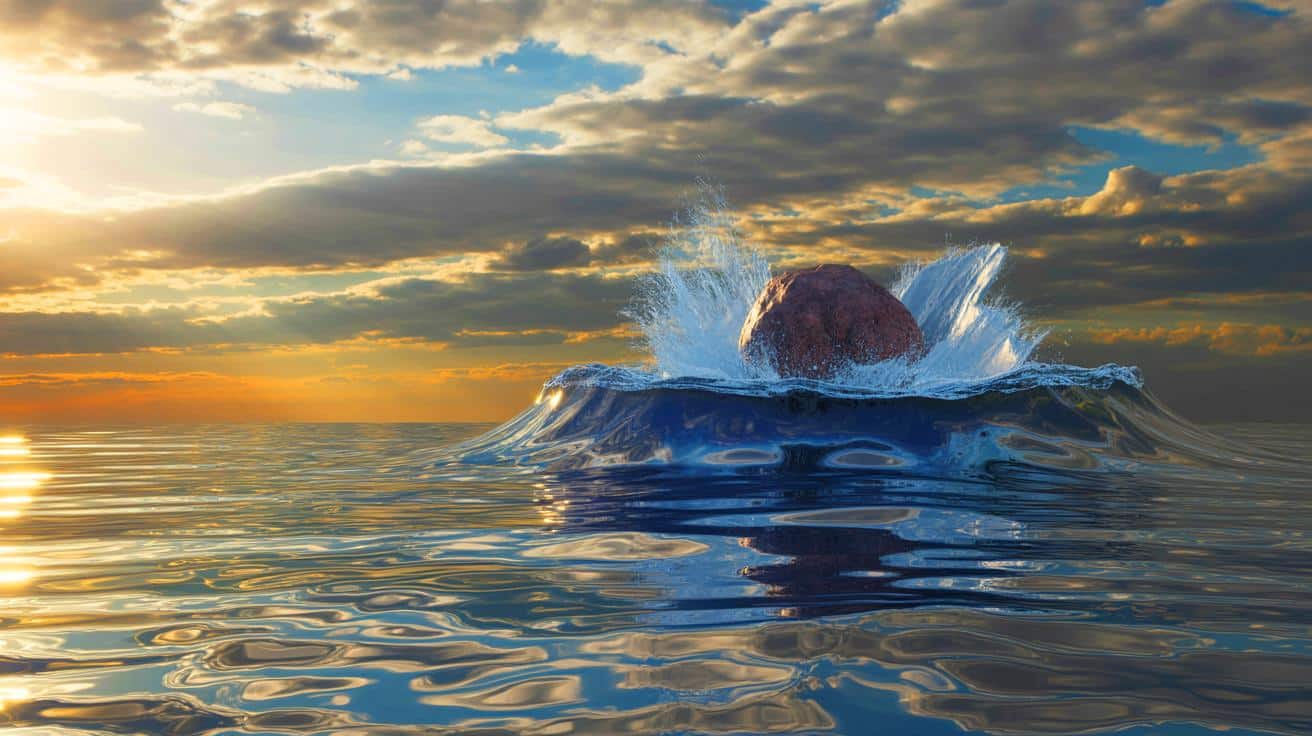Incredible Discovery: North Sea's Silverpit Crater Created by Asteroid Impact!










2025-10-11T12:49:29Z

Imagine a colossal asteroid slamming into Earth, unleashing a monstrous tsunami that reaches heights of over 330 feet—sounds like something out of a sci-fi flick, right? Yet, this extraordinary event actually occurred around 45 million years ago, giving birth to the enigmatic Silverpit Crater beneath the North Sea.
For years, scientists have puzzled over the origins of this 1.8-mile-wide crater, located approximately 80 miles off the Yorkshire coast, buried 2,300 feet beneath the ocean floor. The recent groundbreaking research led by Dr. Uisdean Nicholson of Heriot-Watt University finally confirms that this geological wonder was indeed formed by an asteroid impact. The findings, published in the esteemed journal Nature Communications, put an end to decades of speculation and debate.
Initially discovered in 2002, Silverpit has long intrigued researchers with its striking features, including a central peak and a ring of circular faults surrounding it. While early studies suggested an impact origin, alternative theories ranging from salt movement to volcanic collapse were also considered. By 2009, the debate escalated to the point where geologists informally voted on the crater's history, leaning toward the non-impact hypothesis.
However, recent advancements in seismic imaging and detailed analyses of rock samples have changed everything. The team’s findings reveal not just the crater's formidable structure but also the presence of shocked quartz and feldspar crystals—signs of an explosive impact. Dr. Nicholson stated, “New seismic imaging has given us an unprecedented look at the crater,” affirming the impact-origin theory with compelling clarity.
But what does this revelation mean? Approximately 530 feet wide, the asteroid struck the sea at a low angle, creating a staggering column of debris that culminated in a massive tsunami. This event is a stark reminder of the potential destruction asteroid impacts pose, echoing fears of future cosmic collisions.
Dr. Nicholson described the aftermath vividly: the impact generated a towering wave that reached an astonishing 0.9 miles high, collapsing back into the sea and reshaping the landscape. This discovery isn't just a historical footnote; it’s a wake-up call about the catastrophic potential of asteroid impacts on Earth.
The implications of confirming Silverpit as an impact crater extend far beyond our planet. It opens a treasure trove of geological insights, with Dr. Nicholson emphasizing its rarity as one of only 33 preserved hypervelocity impact craters under the ocean. Understanding these processes could provide clues to similar phenomena on other planets.
As research continues, the mysteries of the Silverpit Crater will undoubtedly unveil new dimensions of Earth’s geological history and the potential threats we may face from space. This riveting tale of discovery underscores the importance of ongoing research into impact craters—who knows what other secrets lie hidden beneath the waves?
 Malik Johnson
Malik Johnson
Source of the news: Rude Baguette